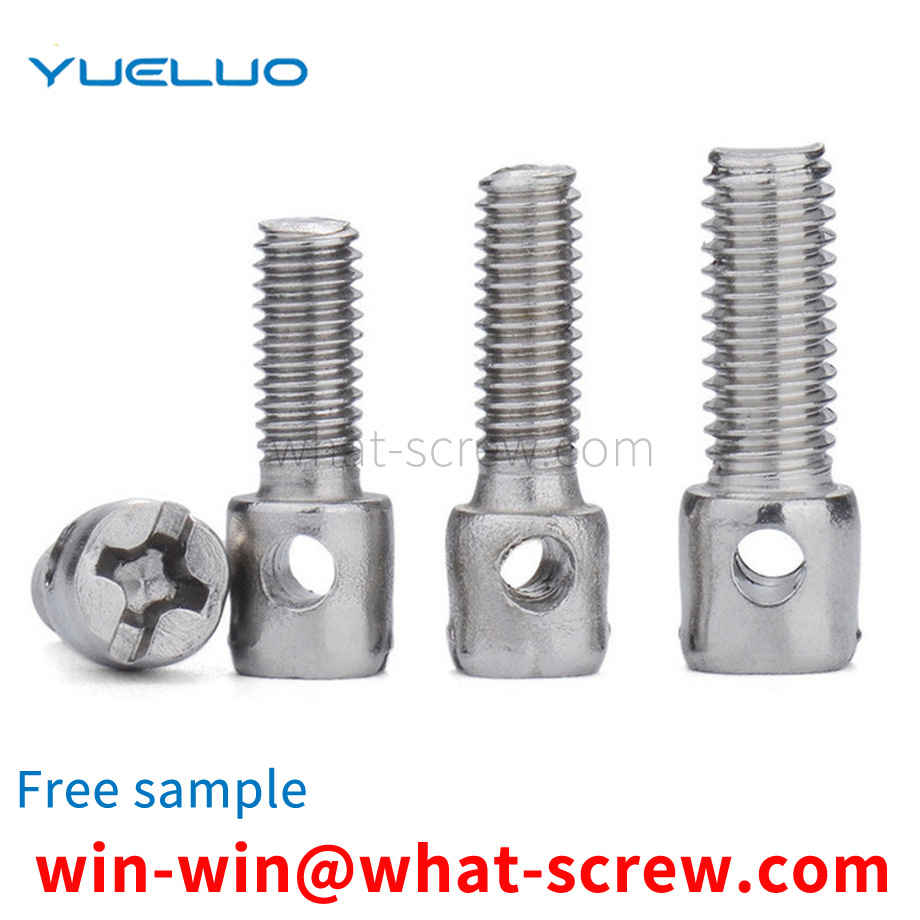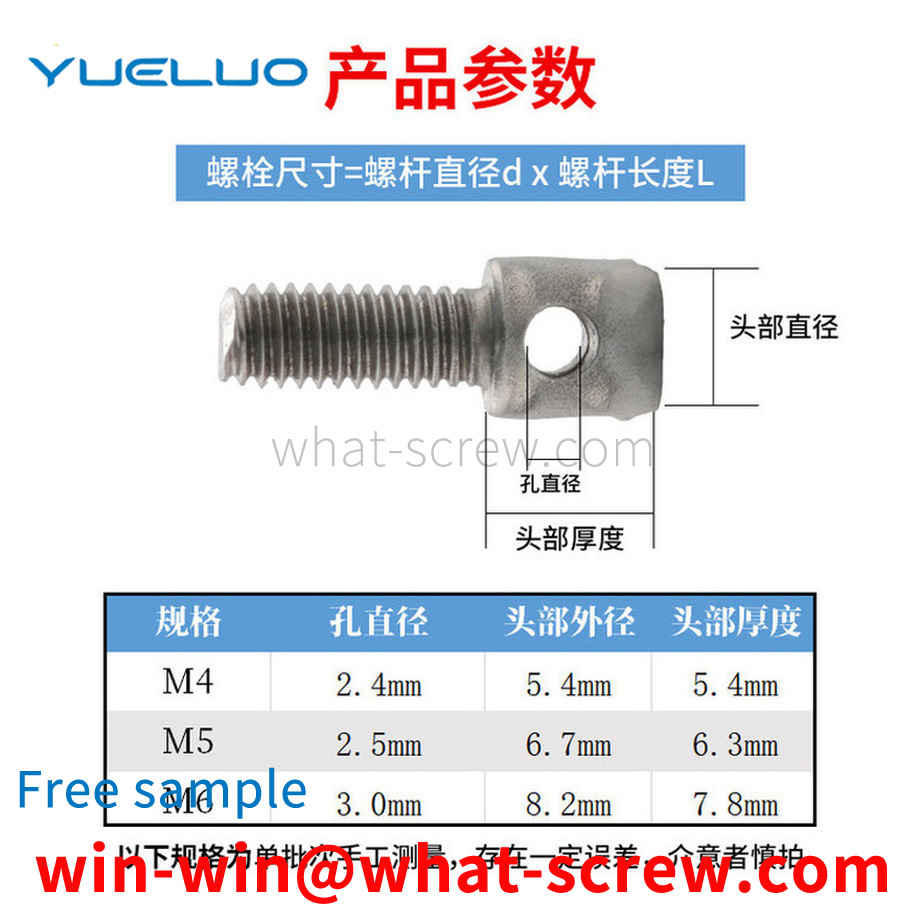Therefore, how to provide a socket nut, a fastener and an installation method thereof that are more firmly connected and can be applied to thin-walled profiles is a technical problem to be solved by those skilled in the art.
Type 1) Slotted ordinary screws are mostly used for the connection of smaller parts. It has pan head screws, cylinder head screws, countersunk head screws and countersunk head screws. The head strength of pan head screws and cylinder head screws is high, and they are connected to common parts; the head of semi-countersunk head screws is arc-shaped, and its top is slightly exposed after installation, and it is beautiful and smooth. It is generally used for instruments or Precision machinery; countersunk head screws are used where the nail head is not allowed to be exposed. 2) The head of the hexagon socket head cap screw and the hexagon socket head flower screw can be embedded in the component, which can apply a large torque and have a high connection strength, which can replace the hexagonal bolt. It is often used in joints where compact structure and smooth appearance are required. 3) Cross recessed ordinary screws have similar functions to slotted ordinary screws, and can be replaced by each other, but the cross recessed ordinary screws have higher groove strength, are not easy to be bald, and have a more beautiful appearance. When using it, it must be loaded and unloaded with the matching cross-shaped screwdriver. 4) Lifting ring screw Lifting ring screw is a kind of hardware accessories for load-bearing during installation and transportation. When in use, the screw must be screwed in to the position where the supporting surface is tightly fitted, and tools are not allowed to be tightened, nor is a load perpendicular to the plane of the lifting ring allowed to act on it. 5) Set screws Set screws are used to fix the relative position of the parts. Screw the set screw into the screw hole of the part to be fastened, and press its end against the surface of the other part, that is, to fix the former part on the latter part. Set screws are usually made of steel or stainless steel, and their end shapes are conical, concave, flat, cylindrical and stepped. The end of the tapered or concave end set screw directly presses the parts, and is generally used in places that are not often disassembled after installation; the end of the flat end set screw is smooth and does not damage the surface of the parts after tightening, and is used for frequent adjustment of the position. At the connection, only a small load can be transmitted; the cylindrical end fixing screw is used in the fixed position that needs to be adjusted frequently, it can withstand a large load, but the anti-loosening performance is poor, and anti-loosening measures should be taken when fixing; Set screws are suitable for fixing parts with thicker walls. 6) Self-tapping screws When self-tapping screws are used on the connected parts, threads may not be pre-made at the connected parts. Use the screw to tap the thread directly when connecting. It is often used to join thin metal plates. There are two types of taper end tapping screws and flat end tapping screws. 7) Self-tapping locking screw Self-tapping locking screw not only has self-tapping effect, but also has low screw-in torque and high locking performance. Its thread is a triangular section, and the surface of the screw is hardened and has high hardness. Its thread specifications are M2 ~ M12.
Several concepts about high-strength bolts 1. According to the specified performance level of bolts above 8.8, they are called high-strength bolts. The current national standard only lists M39. For large-size specifications, especially those with a length greater than 10 to 15 times High-strength bolts, domestic production is still short-term. The difference between high-strength bolts and ordinary bolts: High-strength bolts can withstand larger loads than ordinary bolts of the same specification. High-strength outer hexagon bolts High-strength outer hexagon bolts are made of Q235 (ie A3). The material of high-strength bolts is 35# steel or other high-quality materials, which are heat-treated after being made to improve the strength. The difference between the two is the difference in material strength. From raw materials: High-strength bolts are made of high-strength materials. The screws, nuts and washers of high-strength bolts are all made of high-strength steel, such as No. 45 steel, 40 boron steel, 20 manganese titanium boron steel, 35CrMoA, etc. Ordinary bolts are usually made of Q235 (equivalent to A3 in the past) steel. In terms of strength grades: high-strength bolts are increasingly used. Two strength grades are commonly used, 8.8s and 10.9s, of which 10.9 is the majority. The strength level of ordinary bolts is lower, generally 4.4, 4.8, 5.6 and 8.8. High-strength bolts High-strength bolts are viewed from the force characteristics: high-strength bolts apply pretension and transmit external forces by friction. Ordinary bolt connection relies on the shear resistance of the bolt and the bearing of the hole wall to transmit the shear force. When the nut is tightened, the pre-pressure is very small, and its influence can be ignored. In addition to its high material strength, high-strength bolts also exert a large amount of pressure on the bolts. The pre-pressure generates extrusion force between the connecting components, so that there is a large friction force perpendicular to the direction of the screw, and the pre-pressure, anti-slip coefficient and steel type directly affect the bearing capacity of high-strength bolts. According to the force characteristics, it is divided into pressure type and friction type. The calculation methods of the two are different. The minimum specification of high-strength bolts is M12, and M16~M30 are commonly used. The performance of super-large bolts is unstable and should be used with caution in design.
The retaining ring is a ring-shaped body with an opening, and the traditional processing method is stamping. That is, a plate-shaped material is selected and punched out on the plate-shaped material (a circular body, and then the middle of the circular body is punched to form a ring-shaped ring body.) The punched material in the middle cannot be used again. This results in a waste of material.
Countersunk head screws are mostly used after installation, and the surface of the parts cannot be raised, and the parts to be fastened have two thicknesses. Thickness, after the screw is tightened, there is still a part of the screw thread that does not enter the threaded hole. In this case, the countersunk head screw can definitely be tightened. There is usually a situation where the thickness of the fastened part is less than the height of the head of the countersunk head screw, which is commonly seen in sheet metal parts in mechanical equipment, such as the connection between the hinge of the chassis and the door and the box; the sheet metal of the equipment The connection of the cover to the equipment, etc. Due to the small thickness of the part, the tightened sheet metal part, the screw through hole completely becomes a conical hole, in this case, when the countersunk head screw is tightened, the screw head is not a tapered surface to press the sheet metal part , but the bottom of the screw head and the top of the threaded hole are squeezed. Although it feels that the screw is tightened, the sheet metal part is stuck instead of being pressed. In this case, although it feels that the screw is tightened, the sheet metal The gold pieces were indeed not tightened. This is a very common situation. Let’s talk about the reasons for the processing: the head cone of the countersunk screw has a 90° conical angle, and the apex angle of the newly bought drill is usually 118°-120°. Some workers who lack training do not know this angle is poor. It is often used to ream the hole with a 120° drill bit, which results in that when the countersunk head screw is tightened, it is not the conical surface of the head, but a line at the bottom of the screw head, which is one of the reasons why the so-called countersunk head screw cannot be tightened. , it's not the screw's fault.
We have many years of experience in the production and sales of screws, nuts, flat washers, etc. The main products are: internal expansion bolts, large cap nails and female rivets, hexagonal head guard washers, pressure riveting parts with an outer diameter of 5.4 negative and other products, we can provide you with Provide the right fastener solution for you.



















 Service Hotline
Service Hotline




